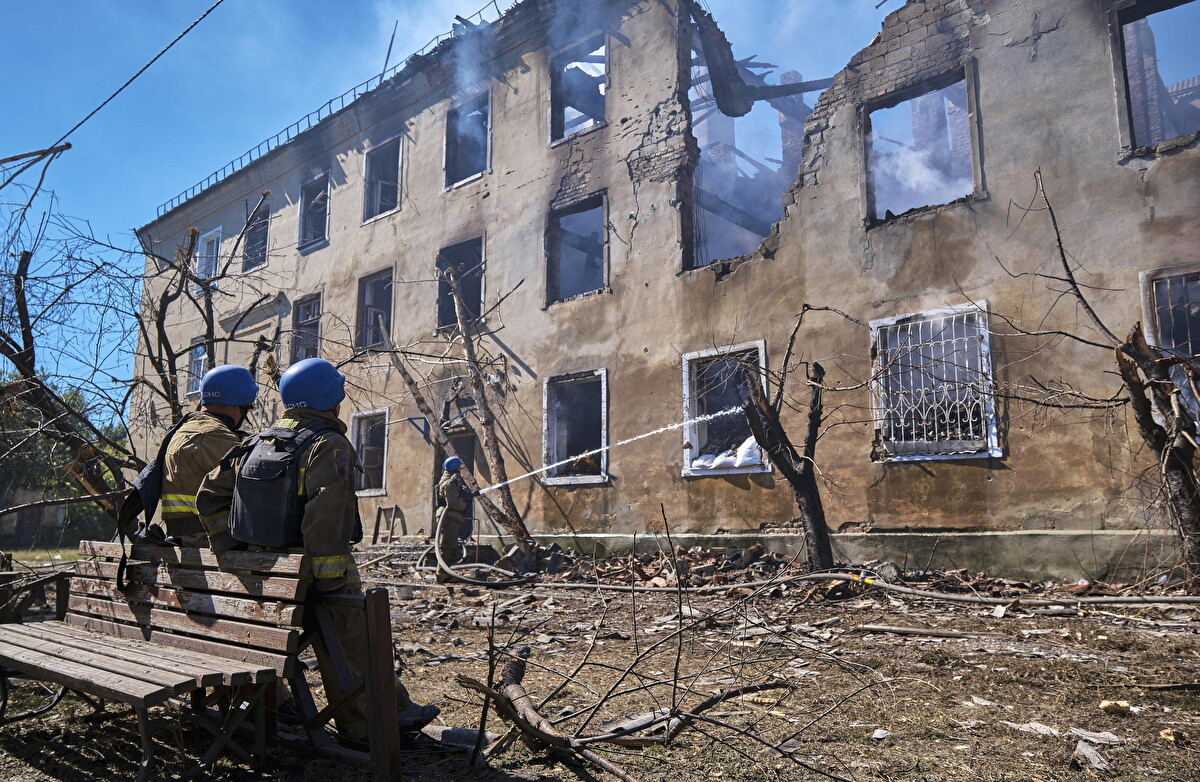Russia launched what Ukrainian officials called the most extensive drone assault since the start of the full-scale invasion, firing 479 unmanned aerial vehicles along with 20 missiles across several regions overnight from Sunday into Monday.
According to Ukraine’s air force, 277 drones and 19 missiles were intercepted, with only about ten projectiles reportedly hitting their targets. One civilian was injured. The claims could not be independently verified.
The wave of attacks concentrated on central and western Ukraine and appeared coordinated with renewed Russian ground offensives along the eastern and northeastern segments of the roughly 1,000-kilometer front. President Volodymyr Zelenskyy, in his Sunday night address, described the situation in several regions as “very difficult,” without elaborating.
Amid the surge in hostilities, Ukraine and Russia carried out another exchange of prisoners on Monday. Zelenskyy confirmed the release of dozens of soldiers and civilians, including the wounded and those under 25. “The process is quite complicated, there are many sensitive details, negotiations continue virtually every day,” he said.
In the northern city of Chernihiv, families crowded outside a hospital, forming a human corridor to welcome returning detainees. Mothers, wives, and siblings held up photos, hoping for news of their loved ones. Freed soldiers passed silently through the line, their faces marked by both fatigue and relief. Some families had not heard from missing relatives for months or even years.
Petro Yatsenko, spokesman for Ukraine’s Coordination Headquarters for the Treatment of Prisoners of War, said the returning POWs were in poor health, lacking proper nutrition and medical care during their captivity. An Associated Press investigation last month found that more than 200 Ukrainian POWs had died in Russian custody since the start of the war.
The repatriation of fallen soldiers’ bodies remains a source of tension. Moscow has accused Kyiv of failing to collect the remains of its dead made available over the weekend. Zelenskyy, however, countered that “Russia has not yet sent Kyiv the names of more than 1,000 Ukrainians whose bodies are in Russian-controlled territories,” accusing Moscow of playing “dirty” games. Kremlin spokesman Dmitry Peskov acknowledged that the swap was expected to proceed but said “no specific arrangements” were currently in place. Ukrainian intelligence chief Kyrylo Budanov said the transfer of bodies was expected to begin this week.
Meanwhile, aerial assaults continue. Overnight attacks by Shahed drones on civilian areas added to a growing toll. The United Nations estimates that more than 12,000 Ukrainian civilians have been killed in drone and missile strikes. Russia maintains it targets only military facilities.
Ukraine, for its part, has also demonstrated long-range strike capabilities. On June 1, Ukrainian special operations forces reportedly hit two Russian fighter jets at the Savasleyka airfield in the Nizhny Novgorod region, about 650 kilometers northeast of the border. The Ukrainian General Staff did not specify the method of attack, and Russian authorities have yet to comment. Some Russian military bloggers claimed no damage was inflicted.
In retaliation, Russia’s Ministry of Defense said it struck a Ukrainian airbase in Dubno, in western Ukraine’s Rivne region, calling it part of a series of punitive strikes following Kyiv’s drone attacks on strategic bomber sites.
On the same night, Russian defense officials said they downed 49 Ukrainian drones over seven regions. Two of the drones reportedly struck a facility producing electronic warfare equipment in the Chuvashia region, more than 600 kilometers east of Moscow.
So far, the latest rounds of direct talks between Russian and Ukrainian delegations in Istanbul have produced no breakthroughs, aside from agreements on POW exchanges and repatriation of the dead. President Vladimir Putin has reiterated that Moscow will continue fighting until its conditions are met.












